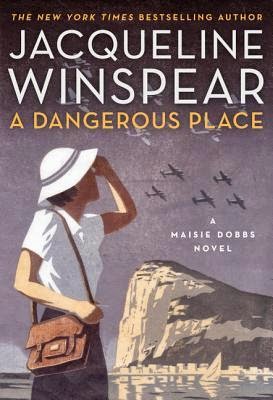D.J. Niko
I’m among friends, so I can be truthful, right?
Then I’ll just be out with it: Historical fiction is not the most
exciting genre in publishing. Readers either love it—and really seek it out—or
not. There’s no, “Hmm, I wonder what I should read next. Oh, look, this novel about
civil unrest during the time of King Harald of Norway might be fun.”
This rule also applies if you’re writing historical fiction. You can’t
be lukewarm about it; you have to be all in. You have to immerse yourself in
the time period you’re writing about, and you have to geek out on things like
authentic language, period wardrobe, and customs of the era. And to accomplish
all this, you have to do inordinate amounts of research, much of which might
not b
e readily available. Like I said, you have to love it.
So, how to make history sexier for readers, for those of us toiling
away in the genre, and for the agents and publishers who stand between the two?
There has been much debate about the use of a “celebrity”—a historical figure
who is instantly recognizable and to whom readers can relate. A few examples of
such protagonists include Frank Lloyd Wright in Loving Frank, Anne Boleyn in The
Other Boleyn Girl, Ernest Hemingway and Hadley Richardson in The Paris Wife, and the Tudors in
umpteen novels. There is an inherent allure to such stories, since they promise
to take readers into the intimate worlds of larger-than-life personalities from
the past. I mean, who doesn’t want to
know what Hemingway’s Paris was like?
There is merit to this technique. (All the titles mentioned above were
major best-sellers.) But it is also fraught with peril. For one thing, if
you’re going to be writing about someone that famous, you’d better get your
facts in perfect order. Everything from the series of events to the
protagonist’s facial ticks must be historically accurate or risk alienating the
reader.
But while historical depictions can’t veer from recorded facts, the
story itself has to be intriguing enough to capture the imagination (this is
fiction, after all), something for which history does not always allow. One way
to get around this, and to prevent the story from becoming too biographical, is
to tell the story from the point of view of a character in the celebrity’s
orbit. In Loving Frank, for example,
the story is told from the POV of Mamah Cheney, Wright’s illicit lover. The
affair between Mamah and Frank did indeed happen, but little is known about the
woman who left her family to be with the charismatic architect. By inserting
Frank (sexy), author Nancy Horan got our attention; but by developing Mamah
(unknown) as the main character, she gripped us with Mamah’s story instead.
Frank who?
Another way to make history more approachable is to bring it into a
current context. In my newest novel, The Oracle, due out November 10th,
I have incorporated bursts of historical fiction into a contemporary thriller,
weaving the two plots together in such a way that history elucidates the
present-day mystery. In my historical subplot, which focuses on the Christian
persecution of pagan worshippers in the Eastern Roman Empire during the fourth
century, the events are factual but the protagonist, a pagan priestess, is
fictitious. Her story augments the thriller plot by giving us a
behind-the-scenes glimpse into the ancient mysteries the modern protagonists
are attempting to decipher. Plus, the historical chapters add to the pacing,
interrupting the adventure at strategic intervals and building suspense.
Do any of these techniques amount to a formula for successful
historical fiction? Not really. True, it’s hard to nail the historical novel
without solid research and authentic settings, but, like all genres, it’s the
storytelling that will catapult it to list status. And a Tudor or two wouldn’t
hurt, either.
DAPHNE NIKOLOPOULOS – Biography
 |
| DJ NIKO |
Daphne Nikolopoulos in an award-winning journalist, author,
editor, and lecturer. Under the pen name D.J. Niko, she has written two novels
in an archaeological thriller series titled The Sarah Weston Chronicles. Her
debut novel, The Tenth Saint (Medallion Press, 2012), won the Gold Medal
(popular fiction) in the prestigious, juried Florida Book Awards. Her follow-up
release, The Riddle of Solomon, continues the story of British archaeologist
Sarah Weston as she seeks the relics—and mystical secrets—left behind by the
biblical King Solomon in remote Israel.
Daphne is currently at work on The Oracle, book 3 in The
Sarah Weston Chronicles, which releases in 2015. Also slated for publication in
2015 is her first historical novel, The Judgment, which is set in Israel and
Egypt in the tenth century BCE.
In addition to writing fiction, Daphne is editor in chief of
Palm Beach Illustrated magazine and editorial director of Palm Beach Media Group.
Prior to that, she was a travel journalist who logged hundreds of thousands of
miles traveling across the globe, with emphasis on little-known and
off-the-beaten-path locales—many of which have inspired her novels.
Daphne frequently lectures about her research on the ancient
world. She is an instructor at Florida Atlantic University’s Lifelong Learning
Society, teaching on the subject of archaeology. She has also spoken to
audiences at the Jewish Community Center of the Palm Beaches’ Academy for
Continuous Education, and several libraries and private groups throughout
Florida.
Born and raised in Athens, Greece, Daphne now resides in
West Palm Beach with her husband and twin son and daughter. You can find her on
the Web at djnikobooks.com and connect
with her on Facebook (AuthorDJNiko)
and on Twitter: @djnikobooks.








Love it. Thanks, Daphne.
ReplyDeleteThanks for asking me, Jim. Always a pleasure to stop in.
DeleteThanks, Daphne. One of the reasons I love the Outlander series, which uses "celebrity" characters, is that I have an affinity for Scotland and Scottish history, so your points make perfect sense.
ReplyDeleteAbsolutely, Patty. Anytime a reader can make such a connection, we're a step ahead!
Delete